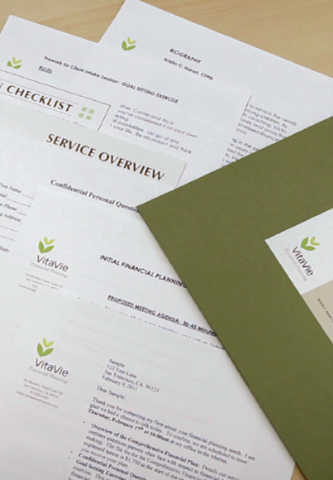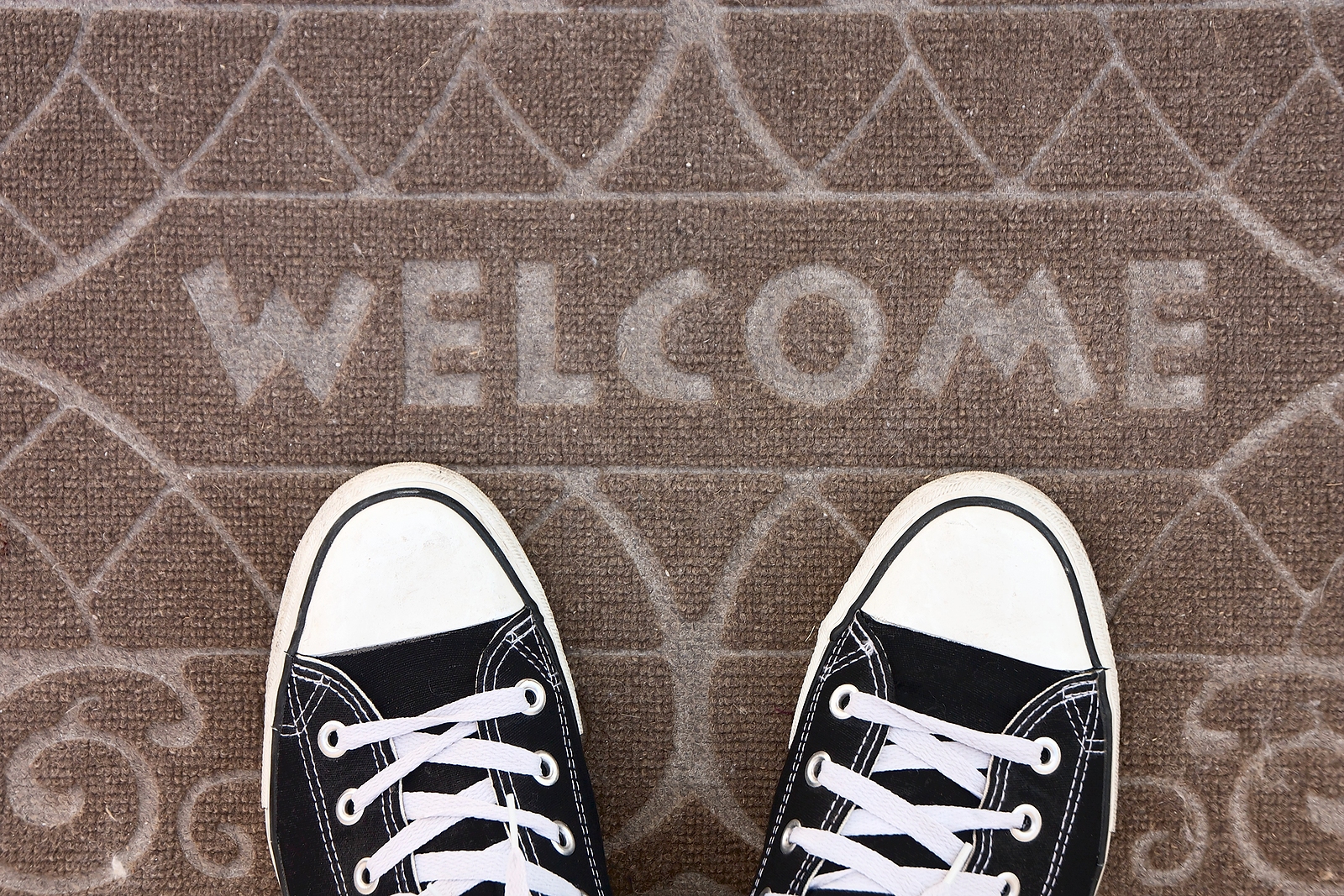Catch the Year in Review podcast episode releasing on 12/24/25!
Welcome Kits for Financial Advisors: Unlocking the ultimate strategy for better lead-to-client conversion
Hey, it’s Kristin!
Kristin is the former founder of a niched RIA that she grew from zero to six figures of revenue in less than three years, completely from scratch. In 2014 Kristin transitioned full time into training and coaching, where she now helps independent financial advisors build Version 2.0 of their firm while living a fulfilled personal life along the way.
Do sales conversations slow you down as a financial advisor? Are you looking to remove some of the friction in the conversion process? What if you could transform that crucial initial meeting into a mere formality? Imagine a scenario where the client has already made up their mind to work with you before even stepping through your door or logging onto zoom. It’s possible, and it all begins with a welcome kit.
Welcome kits are not just a tool; they’re an experience – a powerful first impression. From the moment a lead sets up a meeting, the conversion process is set in motion. If executed properly, welcome kits can lay the foundation of trust, professionalism, and connection, making the subsequent interactions seamless and stress-free.
Why welcome kits are a game changer for advisors
At its core, a welcome kit is a communication packet – a confluence of various media such as PDFs, videos, or printed materials. It is an information treasure chest that prepares your potential clients for the journey ahead. Here’s how your welcome kit assists your sales process:
Addresses questions and concerns:
A welcome kit preemptively addresses common questions and concerns. This mitigates any uncertainty or apprehension the client might have.
Demystifies the client experience:
It provides a snapshot into what working with you would look like, offering transparency and clarity about your approach and style.
Assesses client compatibility:
The kit helps prospects to discern whether or not your services align with their needs.
Sets clear expectations:
It outlines your pricing and avoids any potential surprises, ensuring that the client knows exactly what to expect.
Prepares prospect for the initial consultation:
The kit ensures that clients come well-prepared for the consultation, saving time and allowing for a deeper conversation.
By handling these facets upfront, you provide space for the initial consultation to focus on meaningful dialogue rather than logistical particulars. The prospects are already primed for engagement and more likely to commit to your services.
Crafting an effective welcome kit
Constructing an effective welcome kit involves careful consideration and strategic planning. You’ll need to think through how and where the elements fit in your consultative selling experience. Common elements of an effective welcome kit include:
Welcome letter:
A warm, personalized letter that thanks them for the opportunity to talk with them and expresses enthusiasm about the possibility of working together.
Meeting agenda:
Offer an overview of what the meeting will entail. This sets clear expectations and helps clients come prepared. You may choose to label this document “Tentative” and invite the prospect to add specific questions or points of discussion.
Biograph(ies):
A brief professional biography (or picture of the team along with their roles) humanizes the experience and allows the client to know who they will be working with. As an alternative, you may choose to record a welcome video introducing yourself and team members.
Intake or document requests
Depending on how you structure your first extensive meeting, you may choose to include an exercise for the prospective client(s) to complete prior to meeting with you. Provide the questionnaire or give a link to the online tool to complete. You may require prospects to upload statements or bring certain documents prior to attending a meeting. Give a checklist and instructions on how to share documents securely.
Pro tip: Be careful that you do not overwhelm a prospect to the point that they push off meeting with you!
Service overview
This piece is the most overlooked, yet most valuable piece you can give a prospect. This piece, when designed well, removes the bulk of the sales burden as it makes the connection between pain points with your solutions. (See an example of the service overview I used to use in my financial planning firm.)
Process overview:
Sometimes encompassed within the service overview, this element explains how your process works – from the initial stages to what happens when they become a client. If a prospect has never worked with a financial advisor, or they’ve worked with a ‘wirehouse’ investment advisor, they are not familiar with the way the financial planning process works. Spell it out!
What to expect next:
This could include timelines, the next steps, and how communication will be handled. It will give you, as the advisor, an easy point of reference in the conversation to invite the client to work with you.
The exciting part about a welcome kit is that you can shape it to offer the experience you want the prospect to have. There is no one way to build a welcome kit. Consider your audience, their preferred modes of communication, the best fit with your brand, and the easiest way to ensure you follow through on delivery. You may even offer a few different options depending on the type of client or the meeting format. Remember, the welcome kit’s job is to help accelerate the sales process and customize it to fit your style and your clients’ needs.
How to use a welcome kit in a two-meeting advisor sales process
A common approach for converting leads into clients is the two-meeting sales process. The first meeting is an initial 15-30 minute phone or zoom consultation to qualify the lead. This is followed by an in-depth hour-long meeting where the outcome looks for a commitment from the prospect to become a client (of course, variations exist). When should you send the welcome kit?
For most advisors, it makes the most sense to send a welcome kit immediately prior to the meeting when the qualified prospect is invited to make a commitment to move forward. Using the shorter call to see if you are a good fit for each other, the welcome kit will give you the vehicle to thank the person for their time on the call and restate the next meeting date.
The appeal of a printed welcome kit in a digital world

Even in an era where many RIAs are shifting to virtual service, there is something inherently impactful about a physical welcome kit. The tangibility of printed material creates a sense of permanence and seriousness that digital communications sometimes fail to convey. It’s also an opportunity to showcase your brand through high-quality printing and design.
For a virtual firm, sending a printed welcome kit through mail adds a personal touch and shows the prospect that you are willing to go the extra mile. It can also be a constant physical reminder of your brand sitting on their desk and serve as a tangible reference point during your meeting(s).
Of course you can deliver a digital version of your welcome kit or take a hybrid approach depending on how and when you collect prospect information. (Note: if your audience is environmentally conscious, stick with digital or be sure to use sustainable materials).
Build your own welcome kit
Creating a welcome kit might seem daunting, but here’s a simple roadmap to get you started:
1. Inventory check
Start by taking an inventory of the materials you already have, such as brochures, case studies, or team bios. Often, you might already have much of the content needed for the kit.
2. Identify key components
Make a list of the key components you want in your welcome kit. This could include any of the elements listed above.
3. Design and branding
Ensure that your welcome kit aligns with your brand. Use your company’s color scheme, fonts, and logo. The design should be clean, professional, and engaging. Make the extra investment in quality design.
4. Content creation
Create content that is succinct, informative, and geared towards addressing your prospects’ needs and concerns. You want to demonstrate the value you bring (talking specifically to their problems and worries).
5. Feedback loop
Before finalizing your welcome kit, share it with a few trusted colleagues or existing clients for feedback. Their insights can be invaluable in refining your kit.
6. Print and digital versions
Create both digital and print versions of your welcome kit. While digital is convenient and can deliver value and information instantly, having a printed version can add a touch of class and permanence to your outreach. It does not need to be an either/or proposition.
7. Distribution strategy
Decide on how you will send the welcome kit to your prospects. For digital, this could be through email, a portal, or a download link. For physical copies, ensure that you create a process to personalize, assemble and mail the kit to arrive in advance of the meeting.
8. Iterate and improve:
Don’t let perfection get in the way of starting. Rest assured knowing that a welcome kit is not static and you can change it as you go. Continuously gather feedback and make adjustments as you see how prospects interact with the materials. You may have to remove elements, add pieces, present the content in stages or utilize a different medium.
Your welcome kit as a marketing asset
If your welcome kit is comprehensive, engaging, and designed with your ideal client in mind, it becomes a marketing asset. Instead of hours spent in repetitive explanations and struggling with selling, your kit does the heavy lifting. This not only saves time but ensures that relationships start on the right footing. The welcome kit acts as an extension of your firm and your promise, inviting a prospect to become part of the experience you offer.
How is your welcome experience? Do you have a compelling service overview document? Would you like guidance in how to design your welcome kit? Schedule a complementary consultation.
Hey, it’s Kristin!
Kristin is a CERTIFIED FINANCIAL PLANNER™ professional. Managing her own firm, she grew it from zero to six figures in less than three years, completely from scratch. In 2014 Kristin transitioned full time into training and coaching, where she now helps independent financial advisors to grow their firms.
Find fulfillment faster!
Get the latest tips, articles, podcast episodes and more
from Full Advisor coaching. Sign up for our mailing list today.
Full Advisor Coaching | Designed by Blush Cactus
©2025 Broderick Street Partners, LLC DBA Full Advisor Coaching
